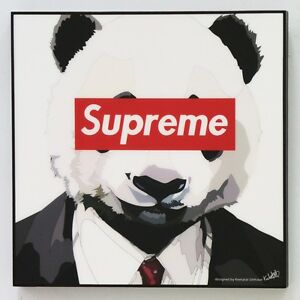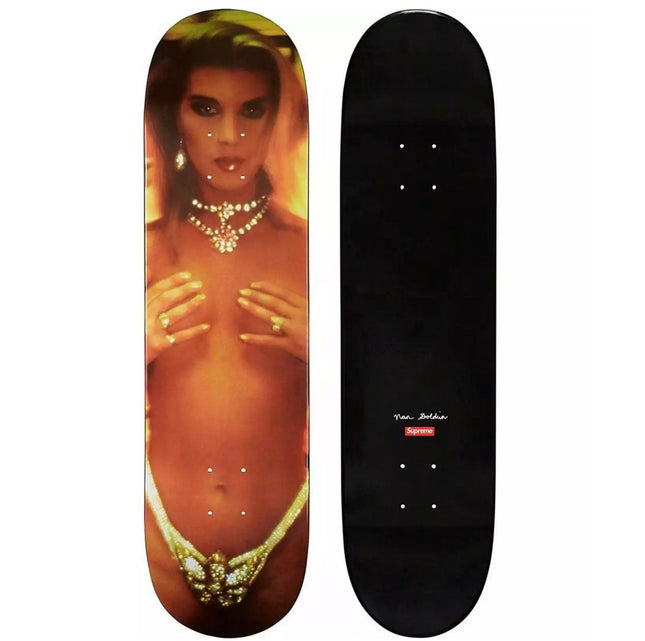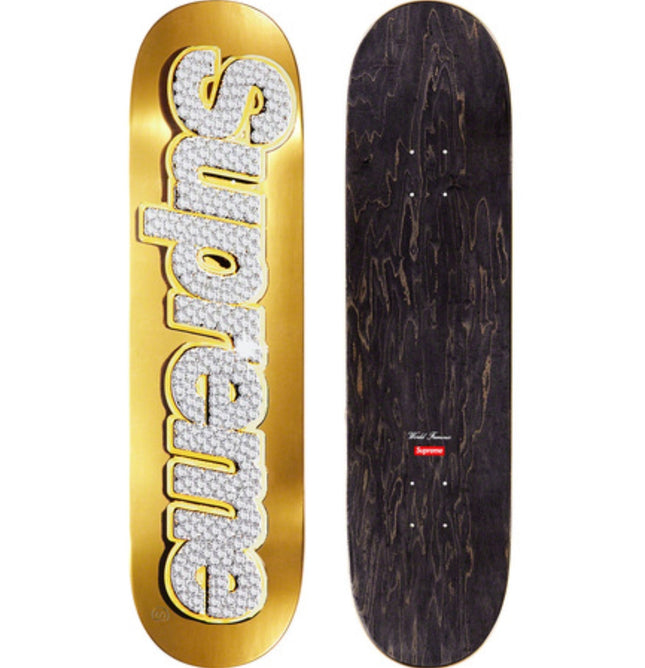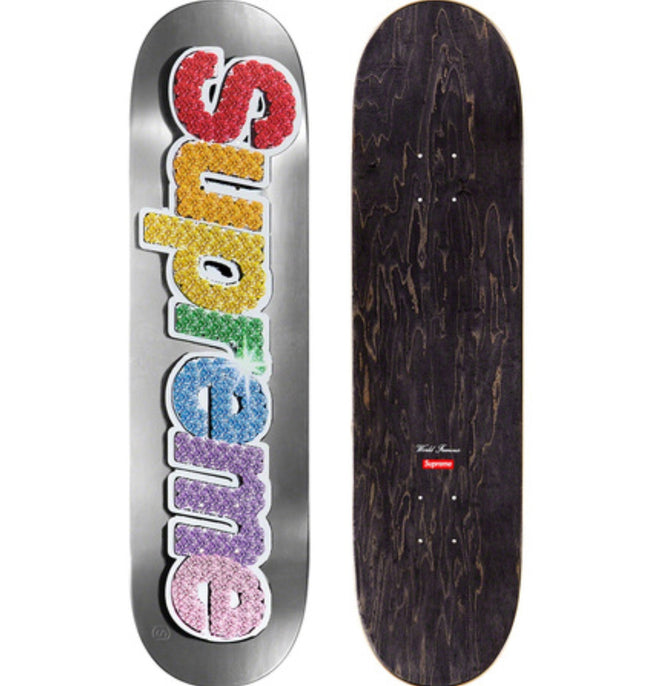Intersection of Supreme with Street Pop Art and Graffiti Artwork
Supreme, a brand that began as a skateboarding shop in New York City in 1994, has burgeoned into an emblematic entity within street pop art and graffiti artwork. The brand's iconic red box logo, with its bold Futura Heavy Oblique font, has become a canvas for artists and a symbol of the streetwear culture that has permeated the fashion industry and the art world. This logo has been manipulated, reimagined, and repurposed by various artists, making it a recurring motif in street art scenes across the globe. Supreme has effectively capitalized on the interplay between brand identity and art, positioning itself as a pivotal player in the conversation about the commercialization of street art and its role within contemporary culture. Supreme's collaborations with renowned artists have been instrumental in cementing its position within the art community. The brand has enlisted the talents of figures from various artistic backgrounds, bridging the gap between underground art and mainstream recognition. These collaborations have often resulted in limited edition pieces that combine the gritty aesthetic of street art with Supreme's streetwear sensibilities. The result is a collection of apparel and accessories that double as wearable art pieces, blurring the lines between practicality and artistic expression. Supreme's products often feature graphics and designs that draw from the themes and styles of street pop art and graffiti, such as satire, irony, and cultural commentary, resonating with a demographic that values style and substance. Purchase Artist Supreme's Street Art Graffiti Modern Art Items, Prints, Originals, Sculptures, and Paintings. Nowadays, Supreme is one of the most potent clothing brands worldwide. It emerged in the 90s and has strong connections with the subcultures of hip-hop and skating. It all started in New York in 1994, when British entrepreneur James Jebbia, before retail fashion, opened the first Supreme store. With his working experience, Jebbia decided to hire local skateboarders, thus gradually transforming his shop into a famous hangout spot within the skateboarding community of Manhattan. Unsurprisingly, he credits a significant part of the brand's success to those first employees, who were not trained by him, yet just by working there, they set up the whole mentality behind Supreme, emphasizing an unpolished and raw coolness. Over the years, Supreme became synonymous with luxury streetwear and served with a cocky, almost nihilistic attitude. The brand still capitalizes on its perception as an anarchist icon and its opposition to consumer culture and international corporations, even though it has a net worth of billions. Supreme has established itself in the public consciousness through two key themes: appropriation on the one hand and implied exclusivity on the other.
It has often utilized pop culture iconography deriving from massive brands such as Coca-Cola, Jack Daniels, Louis Vuitton, etc. More interestingly, Supreme itself has not been trademarked, allowing it to be appropriated. As a result, plagiarism lies in the roots of the brand's history, juxtaposed with its materialistic character. At the same time, Supreme's policy on drops is based on the idea that scarcity heightens demand or, in other words, on the mentality of a "hype beast."every Thursday, a new series of products is released, and consumers queue up to enter not only physical stores but online ones, where, in reality, they have only 15 minutes of browsing time to make their purchase. The brand's success could also be attributed to hthe limited drops This explains the so-called "panic buying" effect, which leads to immediate sales of inflated resale prices. Outs and, later on, Supreme has mwonequally in mainstream and luxury clothing, with celebrities like Kanye West and A$AP Rocky becoming unofficial ambassadors of the brand. At the same time, its marketing strategy is focused on plainly letting the customers chase the brand and not vice versa.
Supreme's Cultural Significance and Artistic Influence
The cultural significance of Supreme in the landscape of street pop art and graffiti artwork is multifaceted. On one level, Supreme represents the commodification of street culture, transforming symbols of rebellion and subversion into coveted items. On another level, it challenges the norms of the fashion and art industries, questioning the dichotomy between high and low art. Supreme's approach to design and branding has been likened to an art movement characterized by an irreverent disregard for convention and a knack for pushing boundaries. The red box logo, synonymous with the brand, has taken on a life of its own, becoming a sought-after motif in the art market and the retail space. ISupreme's logois expected to sbeSseenalongside graffiti tags and street pop art murals, a testament to the brand's deep-rooted connections with urban art forms. Supreme's impact extends beyond its visual contributions; the brand has played a significant role in elevating streetwear to the echelons of high fashion. By curating collaborations with high-profile artists and designers, Supreme has brought the raw energy of the streets into the exclusive world of luxury fashion. These partnerships have introduced a new audience to street pop art and graffiti aesthetics, fostering a newfound appreciation for these art forms among individuals who may not have otherwise engaged with them. The brand's seasonal releases are often met with the same enthusiasm as high-profile art openings, with fans queuing for hours to acquire the latest pieces, further illustrating the brand's art-like status in popular culture. As Supreme continues to engage with the street art community, it also plays a part in the evolving identity of street art itself. Once known as a form of rebellion, street art has entered a new phase where its relationship with brands like Supreme has helped it gain legitimacy and acceptance in new circles. With its countercultural foundations, Supreme provides a bridge that many street artists have crossed, moving from the shadows into the spotlight. The company's collaborations serve as endorsements, signaling that these artists and their work are significant and worthy of attention.
The Future of Supreme in Street Art and Fashion
Supreme's role as a cultural conduit between the underground world of street art and the glossy realm of high fashion is unparalleled. The brand's penchant for disruptive collaboration has seen it work alongside some of the most provocative street pop art and graffiti artists. These artists, who often began their careers illicitly tagging buildings or trains, have found a new kind of canvas in Supreme's clothing and accessories. Through these collaborations, Supreme has provided a platform for street artists to gain wider recognition and introduce their work to a more diverse audience. The essence of street pop art and graffiti is its immediacy and accessibility, and Supreme taps into this by releasing limited-edition products that often sell out within minutes. The brand's drops are events in their own right, generating hype and excitement that mirror the buzz of a street art piece appearing overnight in a public space. The impermanence of Supreme's products and street art captures a shared ethos: the moment's beauty and the importance of 'now.' In the same way, graffiti artwork becomes part of the urban fabric, Supreme's products are woven into the cultural narrative of the times, becoming artifacts that represent the zeitgeist. As Supreme continues to evolve, its relationship with the art world becomes increasingly complex and intertwined. The brand's frequent legal battles over the use of its logo have sparked discussions about ownership, appropriation, and the commercial aspects of street art. In many ways, Supreme's story mirrors the journey of street pop art and graffiti from the fringes to the mainstream, from being dismissed as vandalism to being celebrated in galleries and museums. Supreme's trajectory offers a case study of the power of branding and the shifting perceptions of value within the art and fashion industries. Supreme has shaped the landscape of streetwear and left an indelible mark on the world of street pop art and graffiti artwork. Once just a label, its red box logo has become a cultural icon, signifying a blend of style, art, and attitude. As the brand continues to engage with artists and designers, it redefines what it means to be a brand in the 21st century, straddling the worlds of commerce, art, and culture. Whether viewed as a disruptor or a cultural innovator, Supreme's influence on the aesthetics and philosophy of street art and fashion is undeniable, cementing its role as a beacon of urban creativity and a mirror to the zeitgeist.








